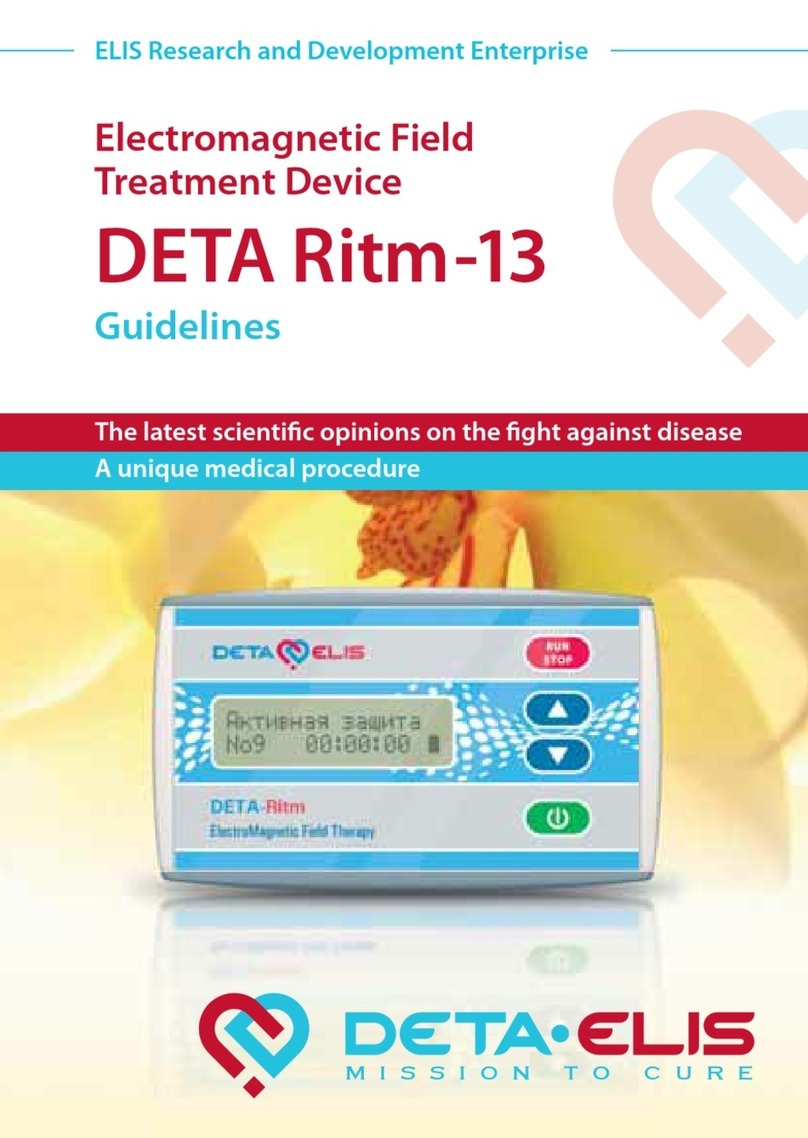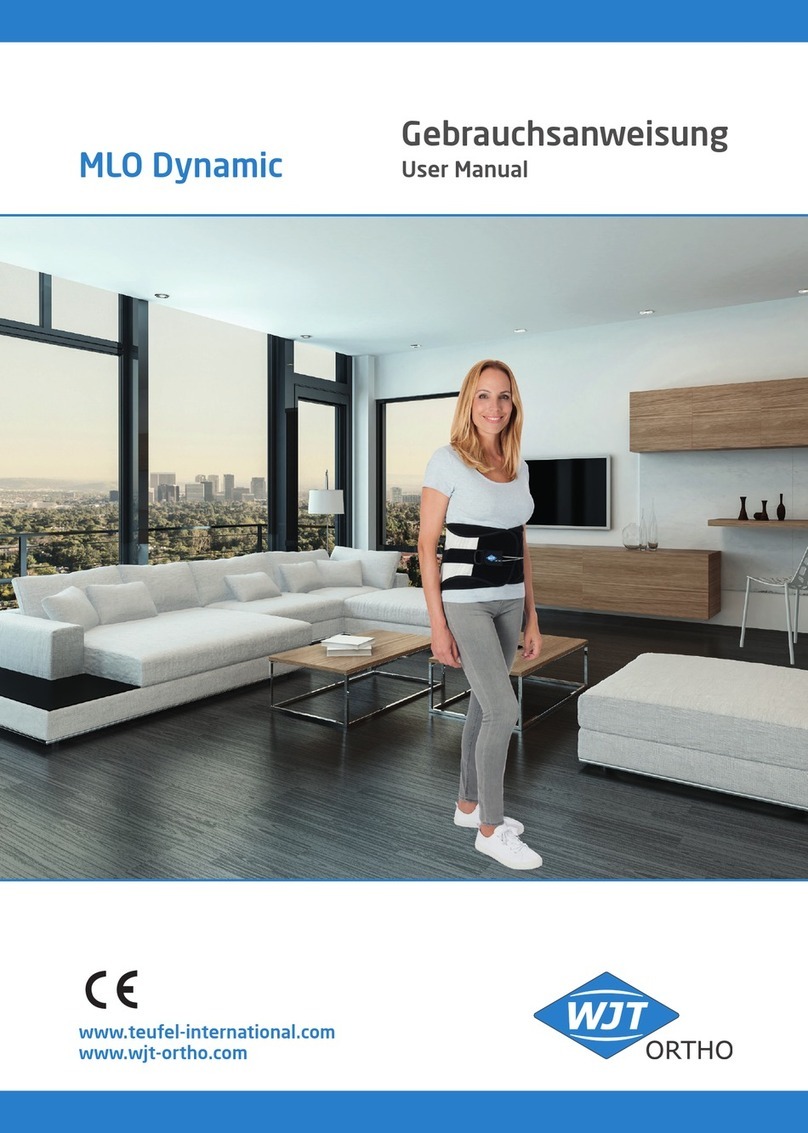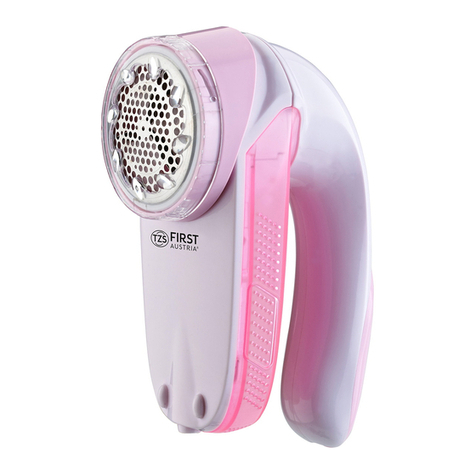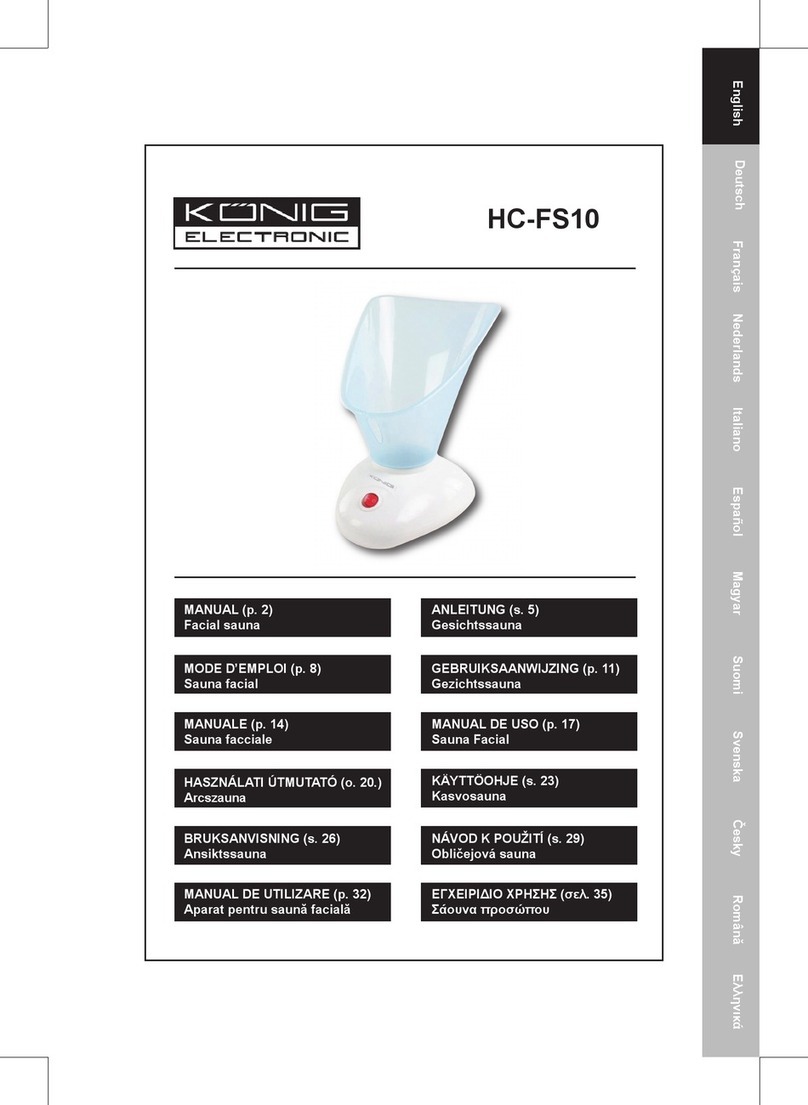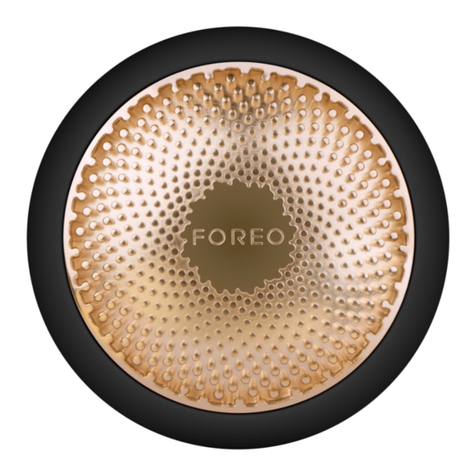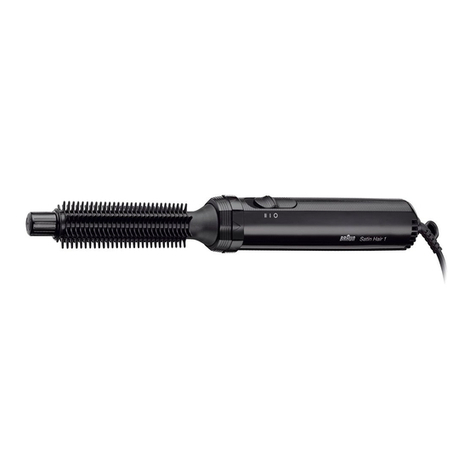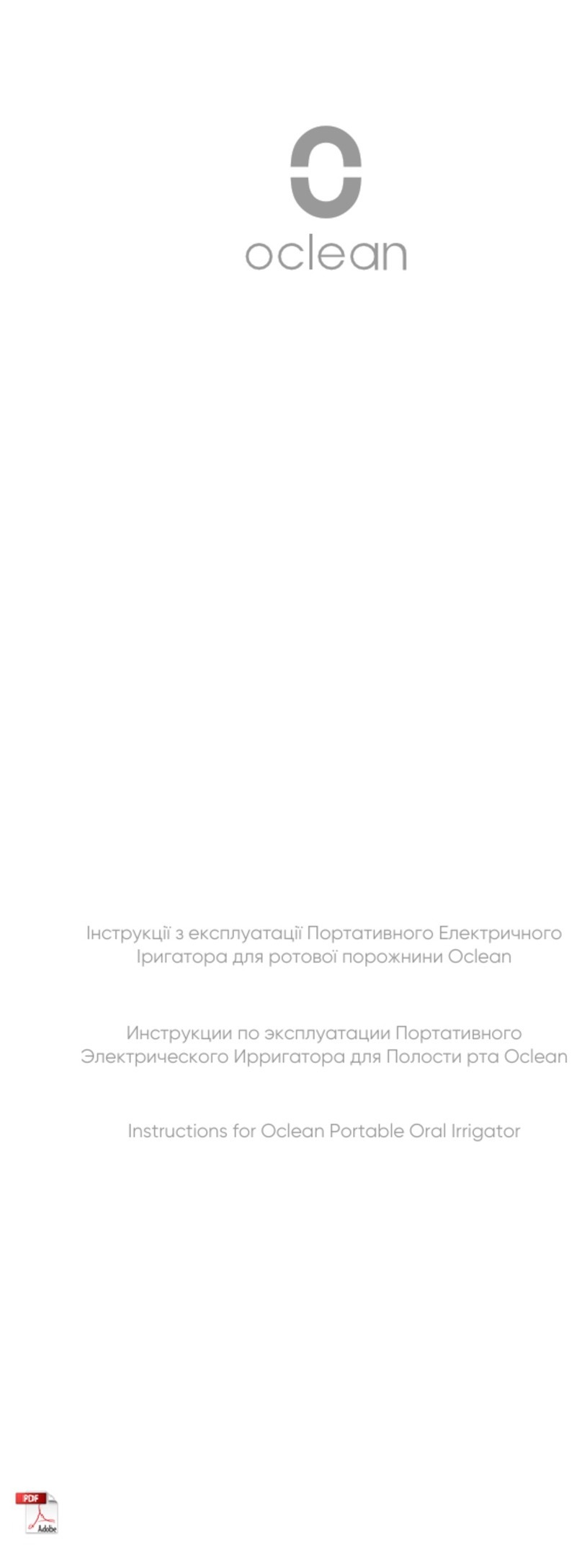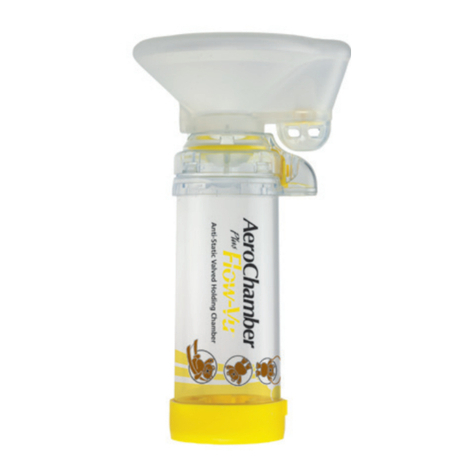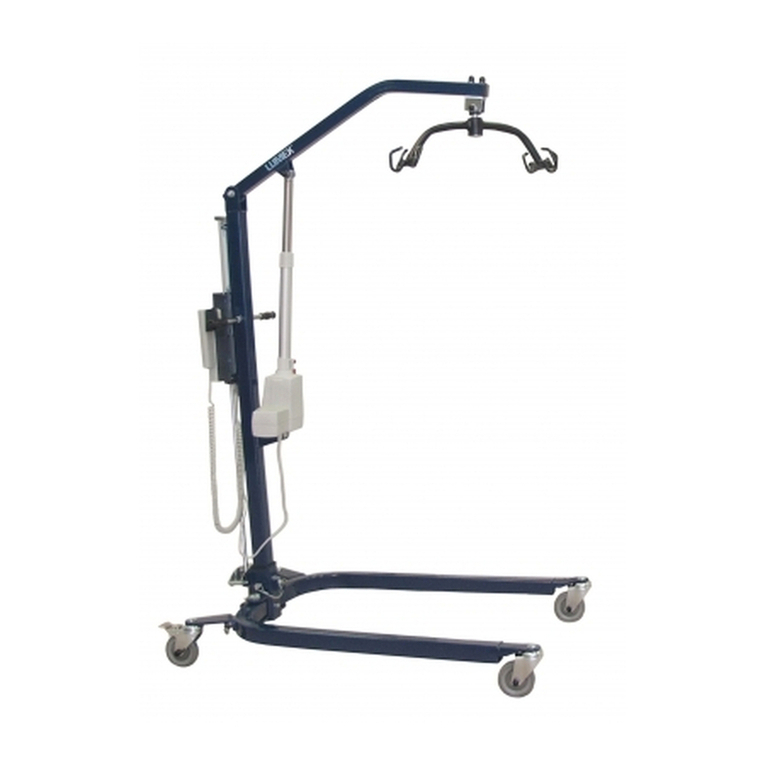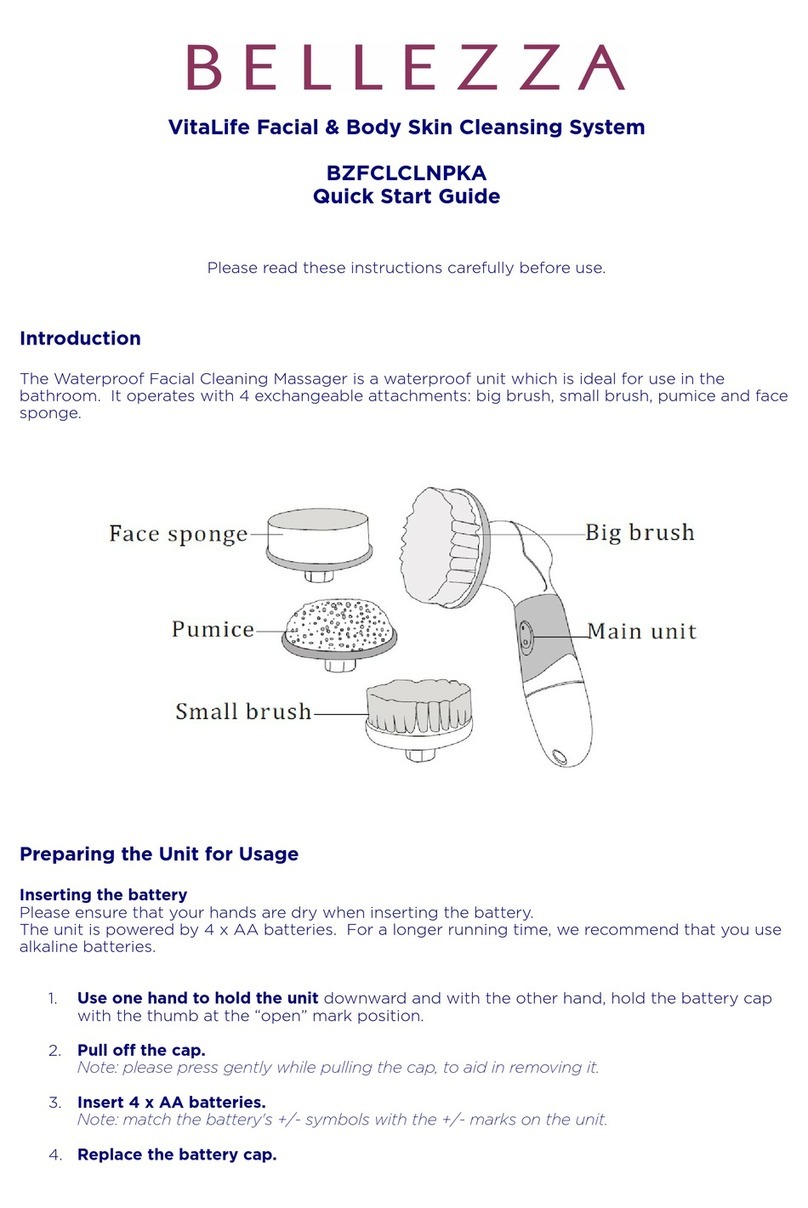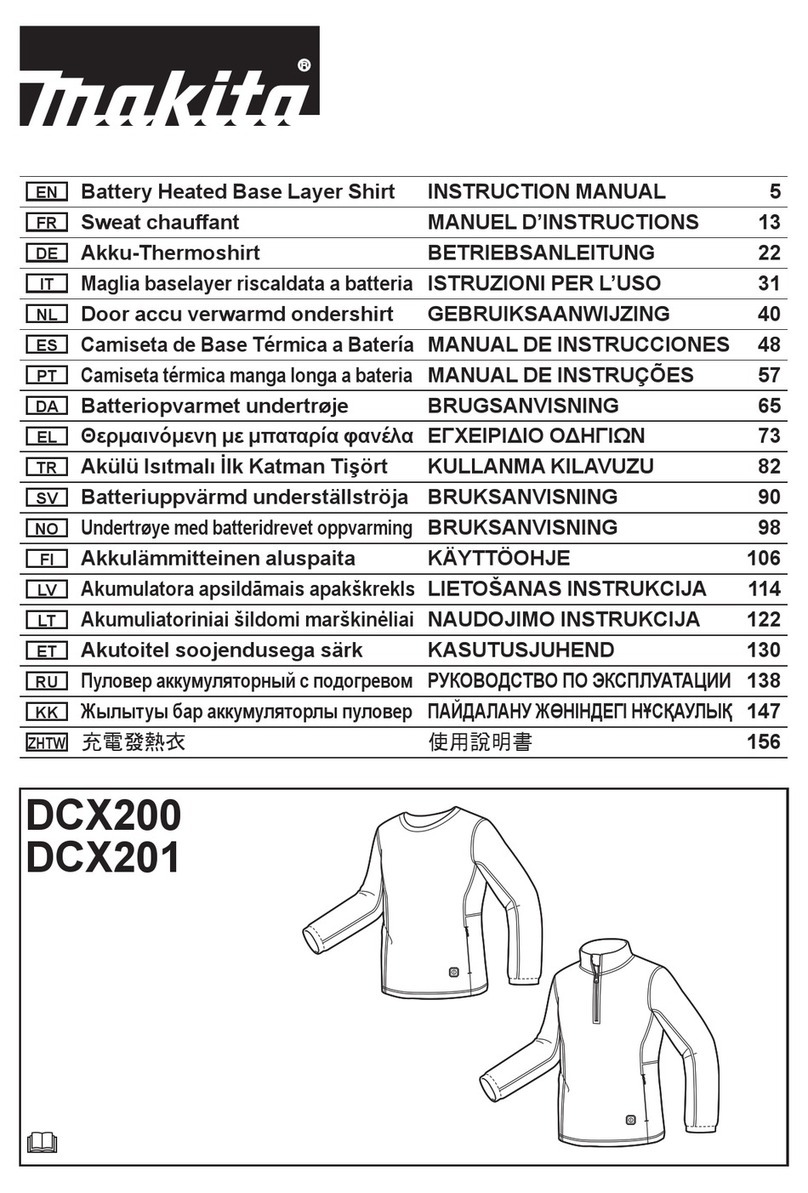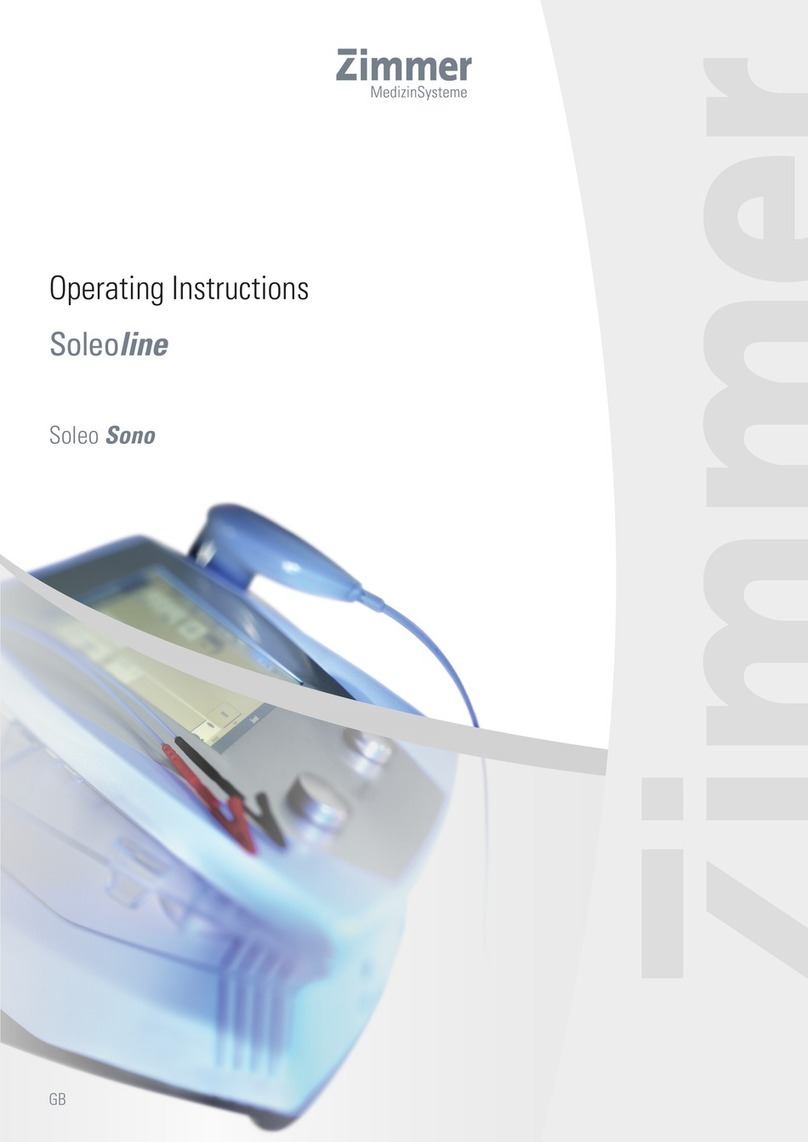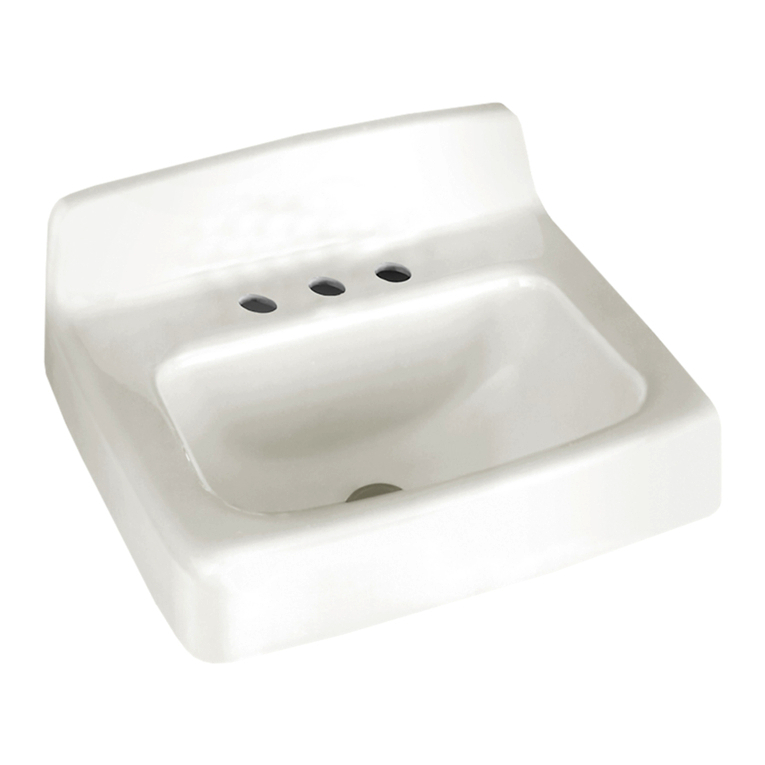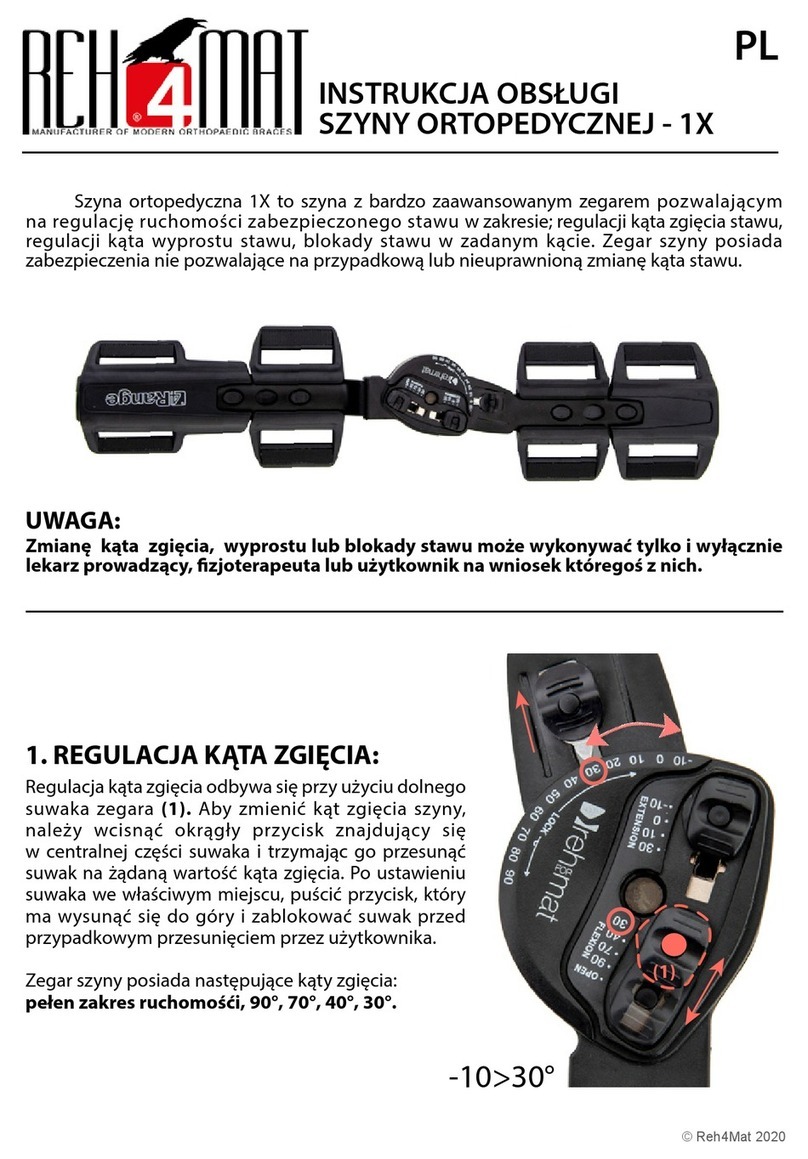Deta-Elis DETA-AP-20 Instruction Manual

1
A unique medical procedure
The latest scientic opinions on the ght against parasites
ELIS Research and Development Enterprise
Electromagnetic Field
Treatment Device
DETA АР-20
Guidelines
MISSION TO CURE

2
© ELIS Research & Development Enterprise, 2010.
All rights reserved. Partial or complete photomechanical reproduc-
tion and recording onto electronic media is prohibited.
Guidelines developed by:
S.P. Konoplev,
T.N. Ghannam

1
Contents
Guidelines
Foreword: History of the Invention and Evidence 2
Physical and biological basis of the method 4
Preface 7
List of treatment programs
1. Drainage therapy 9
2. Ascarids 10
3. Pinworms 13
4. Giardia 16
5. Helicobacter 18
6. Candida 20
7. Trich omoniasis 23
8. Chlamydia 25
9. Mycoplasma 27
10. Staphylococcal infection 30
11. St re p to co c ca l i nf e c ti on 32
12. Colibacillus 34
13. Onychomycosis 36
14 Papillomavirus infection 38
15 Herpes 40
16 Epstein-Barr virus 43
17 Cy tomegalovirus 46
18 Flu with respiratory component 48
19 Antiseptic 50
20 Inammation 52
Conclusion 55

2
Guidelines
Foreword: History of the Invention and Evidence
The history of the “DETA-AP-20”
device’s invention dates back to the
beginning of the last century. The
rst investigations into the impact of
various frequencies on viruses, bac-
teria, helminths, fungi and protozoa
was undertaken by Royal Raymond
Rife, who spent more than two de-
cades in painfully laborious research
to discover an incredibly simple and
new approach to curing literally every disease on the planet.
In 1920, Rife built a universal microscope which was capable
of magnifying objects 60,000 times their normal size. Rife be-
came the rst human to actually see a live virus.
And this took place back in an age when electronics and
medicine were still just evolving. Rife painstakingly identied
the individual spectroscopic signature of each microbe, using
a slit spectroscope attachment. He slowly rotated block quartz
prisms to focus light of a single wavelength upon the microor-
ganism he was examining. This wavelength was selected be-
cause it resonated with the spectroscopic signature frequency
of the microbe based on the now-established fact that every
molecule oscillates at its own distinct frequency. The result of
using a resonant wavelength is that microorganisms which are
invisible in white light suddenly become visible when the color
frequency resonates with their own spectral signature.
Rife was thus able to see these previously invisible organisms

3
and observe them actively in-
vading tissue cultures. Rife
began to develop a method
to destroy these tiny killer vi-
ruses. He used the
same principle to kill them,
which made them visible: res-
onance. By increasing the in-
tensity of the frequency emission which resonated with these
microbes, Rife increased their natural oscillations until they
were destroyed by this frequency. Rife called this frequency
“the mortal oscillatory rate”, or “MOR”, and importantly, it did
no harm to the surrounding tissues.
It took Rife many years until he discovered the frequencies
which specically destroyed herpes, polio, spinal meningitis,
tetanus, inuenza, and an immense number of other danger-
ous disease organisms.
Unfortunately, the genius of Royal Rife was not recognized by
his contemporaries. The pharmaceutical industry was against
conducting painless therapy that cured 100% of patients and
did not cost anything, apart from a small amount of electric-
ity. Orthodox medicine, unfortunately is expensive medicine,
and resents and seeks to neutralize and/or destroy those who
challenge it.
In 1971, Royal Rife died at the age of 83. Fortunately, his
death was not the end of his electronic therapy. A few humani-
tarian doctors and engineers reconstructed his tools, and kept
his genius alive. Rife technology became public knowledge
in 1986 with the publication The Cancer Cure That Worked of
Barry Lynes.

4
Physical and biological basis of the method
The main sources of electric and electromagnetic signals in
humans are: muscle activity, for example, rhythmic contrac-
tions of the heart muscle, bio-electrical activity, i.e. transmis-
sion of electrical impulses from sensory organs to the brain and
signals from the brain to the organs and the metabolic activity
of organs and systems, i.e. the body’s metabolism. Many micro-
organisms, protozoa, fungi, bacteria and viruses, do not have
nervous and muscular systems, so the source of electrical and
magnetic elds is their only metabolic activity. Any life form
has its own unique spectrum of frequencies, i.e. it has its own
specic vibration spectrum characterizing the specicity of the
metabolic processes (metabolism) that occurs in it, as well as
the nature of chemical bonds in macromolecules of pathogens.
From the point of view of biophysics, metabolism is association
and dissociation, formation of new and collapse of previous
compounds, i.e. what distinguishes living things from non-liv-
ing matter. This process involves charged particles: ions, polar-
ized molecules and dipoles of water molecules. The movement
of any charged particle creates a magnetic eld around it, and
the accumulation of charged particles creates an electric po-
tential. These assumptions allow recovery in a person which is
not chemical, i.e. medicinal, but from physical methods, in par-
ticular the inuence of electromagnetic elds (EMF). Metabolic
processes occurring in the infectious agent produce electro-
magnetic waves with a frequency that depends on the inten-
sity of metabolism and its character.
Under the inuence of active energy with resonance fre-
quency on chemical bonds in macromolecules of pathogens,

5
there is a sharp increase in oscillations and, consequently,
the destruction of chemical bonds in them and destruction
of infectious agents. In order to suppress the vital activity of
certain microorganisms, it is not necessary to introduce anti-
biotics, antiparasitic or antifungal agents into the body, i.e. use
harmful methods of drug therapy. Knowing the frequency of
metabolic activity of certain agents can act on their frequency
oscillations, which would disrupt their own rhythms and there-
by inhibit their normal vital activity. Figuratively speaking, the
aim of therapy is, by broadcasting specic frequencies, to de-
activate fungi, viruses, bacteria, protozoa and helminths that
have inltrated the body, and enable excretion from the body
of toxins resulting from their destruction, without harm to the
body, due to the impact of dynamic frequencies on the chemi-
cal bonds in macromolecules of the causative agents.
Resonant frequency therapy based on the frequencies Royal
Rife, can eectively treat diseases caused by pathogens of any
kind, dierent localization in organs and tissues throughout
the process, without harm to the pathogen.
Years of development at ELIS Research & Development En-
terprise have ended in success, and now a device that imple-
ments this unique technique has become available to a wide
range of customers. Today’s “DETA-AP-20” medical device uses
Rife’s frequencies to destroy bacteria.
During large-scale clinical trials of the “DETA-AP” device
carried out for ELIS Research & Development Enterprise, lead-
ing specialists from medical clinics in Russia proved the high
eectiveness, safety and ease of use of the electromagnetic
therapy instrument in inpatient and outpatient conditions for

6
many diseases of infectious nature. The clinical eectiveness of
“DETA-AP-20” medical device as monotherapy is comparable
with, and in many cases exceeds, multi-component drug ther-
apy, which allows fast, pronounced and complete recovery
of many hard-to-treat diseases. The use of specially selected
programs of electromagnetic therapy signicantly reduces
symptoms and reduces the likelihood of complications. The
“DETA-AP-20” treatment device is compatible with all known
therapy methods. It can reduce the use of drugs in complex
use of the device with the latter. The application of electro-
magnetic therapy may provide invaluable assistance in the
event of contraindications to medical therapy, such as aller-
gies, for example. There are currently no portable electromag-
netic therapy devices similar to “DETA-AP” that implement Rife
methodology.
The creating of the “DETA-AP” electromagnetic therapy
medical device opens up new possibilities in the treatment and
physiotherapy of complex pathologies, and for the rst time
places the method on a par with modern highly therapeutic
techniques.
The application of the “DETA-AP-20” device has no contra-
indications and can be used in adults and children, from birth,
subject to observation of treatment methods.
Medical device “DETA-AP-20” can be programed with any
twenty of the 1,500 available treatment programs. As a result
of statistical analysis, the most common and most aggressive
pathogens were selected for the starter set.

7
Preface
The deplorable global statistics for parasitic diseases served
as the reason for creating this set of programs. The urgency
of the problem is that all doctors of traditional medicine are
certain of the current epidemic of parasites while conventional
medicine does not conduct statistical surveys or research in
this area. Parasitic diseases have no symptoms per se and may
appear in the form any disease. Moreover, the waste products
of parasites have a profound toxic eect on the body, compli-
cating the course of somatic disease. Existing treatment regi-
mens do not envisage detoxication and antiparasite therapy,
but are most often directed towards suppressing symptoms,
and as a result - leading to more toxic stress. In general practice,
there is no suspicion for parasites. Tests for helminths and pro-
tozoa are very rarely prescribed. Also, these diagnostic meth-
ods used at present provide poor results. However, complica-
tions caused by parasites, deserve particular attention.
Everybody thinks that the issue is not one of personal con-
cern. However, if you have ever experienced any of the follow-
ing, then there is a possibility you are infected:
• You have pets.
• You have eaten unwashed vegetables, fruit or berries.
• You have eaten rare/raw meat, sh or seafood.
Moreover, helminth eggs can be present on banknotes, the
handrails of public transport, in earth and water, i.e. every-
where.
What is the situation? There is only one: to start treatment
today. Today’s market is lled with all sorts of agents “protect-

8
ing against worms”. These include well-established agents and
agents with unproven eects. We must remember one thing:
the death of the parasites is will cause toxic stress. Above all,
the body must be eliminated of toxins that have already accu-
mulated before antiparasitic treatment.

9
List of treatment programs
1. Drainage therapy
A necessary element in creating an eective schedule of
antiparasite therapy is observance of specic phasing in the
restoration of disrupted regulatory processes in the body, ac-
tivating the detoxication function, and stimulation of protec-
tive immune mechanisms. It is inuence in key areas on the
diseased body that leads to change, without which it is usually
impossible to provide a new quality of health with the pres-
ence of a pathological process.
The main stage of any treatment of acute and chronic dis-
eases should of course be to eliminate the level of intoxication
syndrome. This is the aim of drainage therapy. Irrespective of
the specic clinical symptoms of intoxication and localization
of the main pathological process, at the same time as the treat-
ment programs, a targeted impact on the function of certain
organs and systems is conducted, which is, above all, the acti-
vation of excretory functions of the body. Since the accumula-
tion of toxins occurs for the most part in the intercellular space
and is excreted by the lymph, it is necessary to help the body
rid itself of toxins by targeting the lymphatic system. Impact
on the lymphatic and immune systems in drainage therapy not
only eliminates toxins, but also increases resistance to infec-
tion.
Application:
The “Drainage therapy” program should be conducted after
the end of treatment programs. The frequency of application
depends on the degree of intoxication: the higher toxicity, the

10
more frequent the need to use it. The drainage program can
be used 2-4 times a week. It will reduce the potential conse-
quences associated with active destruction of microorganisms
during treatment programs. A prerequisite for carrying out
drainage therapy is to drink plenty of clean, a non-carbonated
and unboiled water, equivalent to not less than 30 ml. per kilo-
gram body weight per day.
2. Ascarids
According to WHO, almost 75% of
the world’s population is infected
with parasites, regardless of quality
of life! This statistic is the same for
developing countries and prosper-
ous, developed countries.
According to the same source, a
large number of diseases are either
directly caused by parasites, or are the result of the life of para-
sites in our bodies! Currently, the most common helminthiasis
is ascariasis (often as enterobiasis).
Pathogen. Ascariasis occurs because due to parasitism of
large roundworm (ascaris lumbricoides) in the human body.
In ascariasis, the only source of infection is the infected per-
son. Eggs excreted in the stool are not infectious, so people
with ascariasis cannot infect others, even in close everyday
communication. Helminth eggs excreted in feces of should
reach maturity by developing in soil. Formation of the larvae
in the egg takes place in 10-12 days under favorable conditions.

11
Human infection with ascarid eggs takes place by contact of
the human body with contaminated water, unwashed fruit or
vegetables or from unwashed hands.
Pathogenesis. Mature eggs swallowed by a human turn into
larvae in the small intestine, and they penetrate the intestinal
wall, enter the blood capillaries and then migrate through the
bloodstream to the liver and lungs. In addition to the intestine,
liver and lungs, ascarid larvae are also occasionally found in the
brain, eye and other organs. They feed on blood serum and
erythrocytes. In the lungs, the larva actively enter the alveoli
and move to the oropharynx where sputum is swallowed with
larvae. Once in the intestine, the larvae reach maturity within
70-75 days, when the female will lay eggs. The life expectan-
cy of adult ascarids is up to one year, after which it dies and
is excreted together with the feces. Therefore, the presence of
ascarids in one person for several years is only explained by re-
infection.
The symptoms of early-phase clinical manifestations of as-
cariasis caused by ascarid larvae migration in the bloodstream
are diverse. Moderate infection at this stage is often asymp-
tomatic.
In the event of mass infection, there is general weakness,
malaise, headache, fatigue, and the appearance of itchy rashes
on the skin, such as urticaria. Less commonly, there is pulmo-
nary pathology in the form of a cough with phlegm, and with
an asthmatic component, shortness of breath and chest pain.
The second, intestinal phase of ascariasis most often occurs
with mild symptoms: dyspeptic disorders (unstable stools, pain
in the parumbilical area), weight loss, neurasthenia, and dimin-
ished work capacity.

12
However, sometimes there is a serious nature: focal lesions
observed in the lungs, hives, fever, bowel obstruction, liver ab-
scesses and appendicitis. Ascariasis enables the progression of
infectious diseases in chronic form, and worsens the course of
many diseases.
Accurate diagnosis of rst-phase ascariasis is based on de-
tection of ascarid larvae in the sputum. Radiography may be
of great help in the migration phase of ascariasis. Diagnosis of
the late (intestinal) stage is based on the detection of ascarid
eggs in the feces. The intestinal phase of ascariasis, excretion of
ascarid eggs is possible, provided that there are individuals of
dierent sexes in the intestine. If ascariasis is suspected, tests
should be carried out three times with intervals of 1-2 days.
Enzyme-linked immunosorbent assay (ELISA) is widely used in
modern laboratory diagnosis of ascariasis.
Application:
The “Ascaris” program is used for one month at all phases of
ascariasis. The frequency of use is no more once every 3 days.
The course of treatment is not less than 10 sessions.
After the “Ascaris” antiparasitic program, the “Drainage ther-
apy” detoxication program is recommended. A prerequisite
for carrying out drainage therapy is to drink plenty of clean,
a non-carbonated and unboiled water, equivalent to not less
than 30 ml. per kilogram body weight per day.
It is necessary to normalize the stool: empty the intestines
every day for eective elimination of parasites and their toxins.
It is advisable to combine the anti-worm program with taking

13
infusions, or tinctures (wormwood, hairgrass, burdock root,
cloves, etc.). In an overreaction of the body, enterosorbents can
be used.
The criteria for cure is the disappearance of clinical appear-
ance and the absence of helminth eggs in feces (after testing
three times).
3. Pinworms
The disease caused by pinworms
is called enterobiasis. This is a very
common disease, often appearing
in children. It must be remembered
that if helminthiasis is found in one
family member, it is likely that all
other family members are infected
as well. Therefore, treatment must
be carried out by all children and adults in the family at once.
The enterobiasis pathogen is the pinworm. Pinworms are
small worms that live in the lower small and large intestines.
Pinworm eggs are found in the skin folds around the anus, and
they are rarely found in the feces.
Females, containing 5,000-15,000 eggs each, unable to grip
on to the intestinal wall, move down to the rectum and crawl
from the anus to lay eggs in the perineum. After the laying the
eggs, the female dies. The life span is no more than a month.
In the event of pinworms penetrating the appendix, they can
cause appendicitis.
During sleep, a person infected with pinworms contami-
nates their hands, nails, and clothes with helminth eggs when

14
scratching the skin of the perineum. The eggs of pinworms
move from bedclothes and hands to all domestic and work
goods and foods. Shaking hands is also a way to transfer the
eggs of pinworms. After eggs enter the bowel, larvae is pro-
duced and after 2-4 weeks they develop into adult worms, and
the whole cycle repeats again.
Symptoms. A very important sign indicating the presence of
pinworms is itching around the anus, requiring scratching of
the area. Itching often occurs in the evening or at night dur-
ing sleep. Sometimes, abrasions are produced as a result of
scratching. On noticing these symptoms, steps are required for
dehelmintization.
In young girls, pinworms may make their way into the geni-
tal tract. This leads to vaginitis, accompanied by itching. There
may be a discharge from the genital tract.
When in the body, pinworms produce toxins that aect the
nervous system, causing irritation and depression.
Diagnosis. There is not normally any need to conrm di-
agnosis, but if necessary, your doctor may conduct a further
examination with a piece of adhesive tape and a microscope
(adhesive tape is applied to the buttocks and then examined
under a microscope; if there are pinworm eggs on the skin, they
will be detected).
Application:
The “Pinworms” program is used once every 3 days. The
course of treatment is not less than 10 sessions.

15
For the purpose of detoxication, “Drainage therapy” is rec-
ommended after the antiparasite program. A prerequisite for
carrying out drainage therapy is to drink plenty of clean, a non-
carbonated and unboiled water, equivalent to not less than 30
ml. per kilogram body weight per day.
It is necessary to normalize the stool: empty the intestines
every day for eective elimination of parasites and their toxins.
It is advisable to combine the anti-worm program with taking
infusions, or tinctures (wormwood, hairgrass, burdock root,
cloves, etc.). In an overreaction of the body, enterosorbents can
be used.
Prevention
To prevent the disease, the cleanliness of hands (especially
in children) needs to be monitored, children’s nails need to be
kept short, thorough washing is required in the mornings and
evenings and underwear must be changed daily. In cases of in-
creased risk of infection (kindergartens and summer camps), it
is recommended to wear close-tting underwear which should
be changed daily, boiled and ironed. Potties should be rinsed
with boiling water.
Observation after treatment continues for 6 weeks. Con-
trolled tests for patients with clinical symptoms are carried out
3 times with an interval of 1-2 days. The rst control examina-
tion is performed 6-7 days after treatment.

16
4. Giardia
Giardia is a parasitic protozoan
agellate. Giardia is common in all
parts of the world and the incidence
is infection is high: one in ve people
in the world is infected with giardia,
and this gure increases consider-
ably every year. Giardia prevalence
among children varies from 27-70%.
Humans are the source of infection (patient or carrier). Infec-
tion occurs through the mouth by ingestion of food or water
contaminated with giardia, and when passing giardia to the
mouth with dirty hands. It has been established that the chlo-
rine, most commonly used for water purication, does not have
any destructive eects on giardia cysts.
The disease caused by giardia is called giardiasis.
Giardia parasites live in the small intestine, bile ducts and gall
bladder. Once in the gastrointestinal tract, they multiply very
quickly, irritating the mucous membrane.
Giardia exists in two forms: vegetative (mobile) and in the
form of cysts.
Symptoms. When people are infected with giardia, there is
pain in the upper abdomen, around the navel, rumbling and
bloating of the stomach. There may be constipation alternating
with diarrhea (the feces are yellow with mucus). Giardiasis can
cause duodenitis, pancreatitis, enteritis, hepatitis and chole-
cystitis, a manifestation of the disease of local character. Often
giardiasis hepatitis is observed: liver enlargement and indura-
tion. Often it is associated with lesions of the pancreas.

17
Giardiasis is often accompanied by symptoms of intoxica-
tion: fatigue, tearfulness, lethargy, headaches and depression.
This may be due to the decay of giardia and accumulation of
their metabolic products in the bowel. Often allergies, joint
pain, itching and fever is observed.
Diagnostics include microscopy of the stool or duodenal
contents to detect giardia cysts. In chronic forms, the excre-
tion of cysts is periodic, so to conrm the diagnosis, it is rec-
ommended to test the feces 3-4 times at various intervals (7-8
days).
Application:
The “Giardia” program is intended for the treatment of
giardiasis. It should be carried out at intervals of 1-3 days for
1 month (10-15 times). The frequency of application depends
on the state of health after carrying out repetition of the pro-
gram. If after repeated sessions there is pain in the left upper
quadrant, the interval between sessions should be increased.
For the purpose of detoxication, “Drainage therapy” is recom-
mended after the treatment program. It can be applied several
times daily, as required. A prerequisite for carrying out drain-
age therapy is to drink plenty of clean, a non-carbonated and
unboiled water, equivalent to not less than 30 ml. per kilogram
body weight per day.
The criteria for being cured is the disappearance of giardia
cysts in the stools or duodenal contents after treatment. It is
recommended that testing is carried out 3-4 times at various
intervals (7-8 days).

18
5. Helicobacter
Helicobacter is currently consid-
ered as a factor of chronic inamma-
tion of the stomach: helicobacterio-
sis, which enables the development
of gastritis, peptic ulcer and gastric
tumors. The World Health Organiza-
tion denes helicobacter as a group I
carcinogen. This means that the im-
pact helicobacter on the incidence of tumors in the stomach
and duodenum has been proven. Helicobacter is capable of liv-
ing in the stomach for a long time, are resistant to aggressive
factors in the stomach and can change its acidity. An infected
person is a source of helicobacter.
Actively multiplying, the microorganism excretes a number
of enzymes that have a damaging eect, promote the secre-
tion of hydrochloric acid and lead to a reduction of the protec-
tive properties of the mucous membrane. Helicobacter pylori
infection can cause inammation of various parts of the stom-
ach and duodenum. Moreover, an increase in the number of
helicobacter in gastric juices suppresses the immune system.
Symptoms may not appear immediately. Helicobacter be-
comes active at a time of weakness of the body and during
failure of the reactions of the immune system. Stress, a change
in diet or acute infections exacerbate disease. The patient is
troubled by belching, abdominal pain, a burning sensation and
nausea. These unpleasant and painful sensations are caused by
the increased acidity of gastric juices, which is a consequence
Table of contents
Other Deta-Elis Personal Care Product manuals

